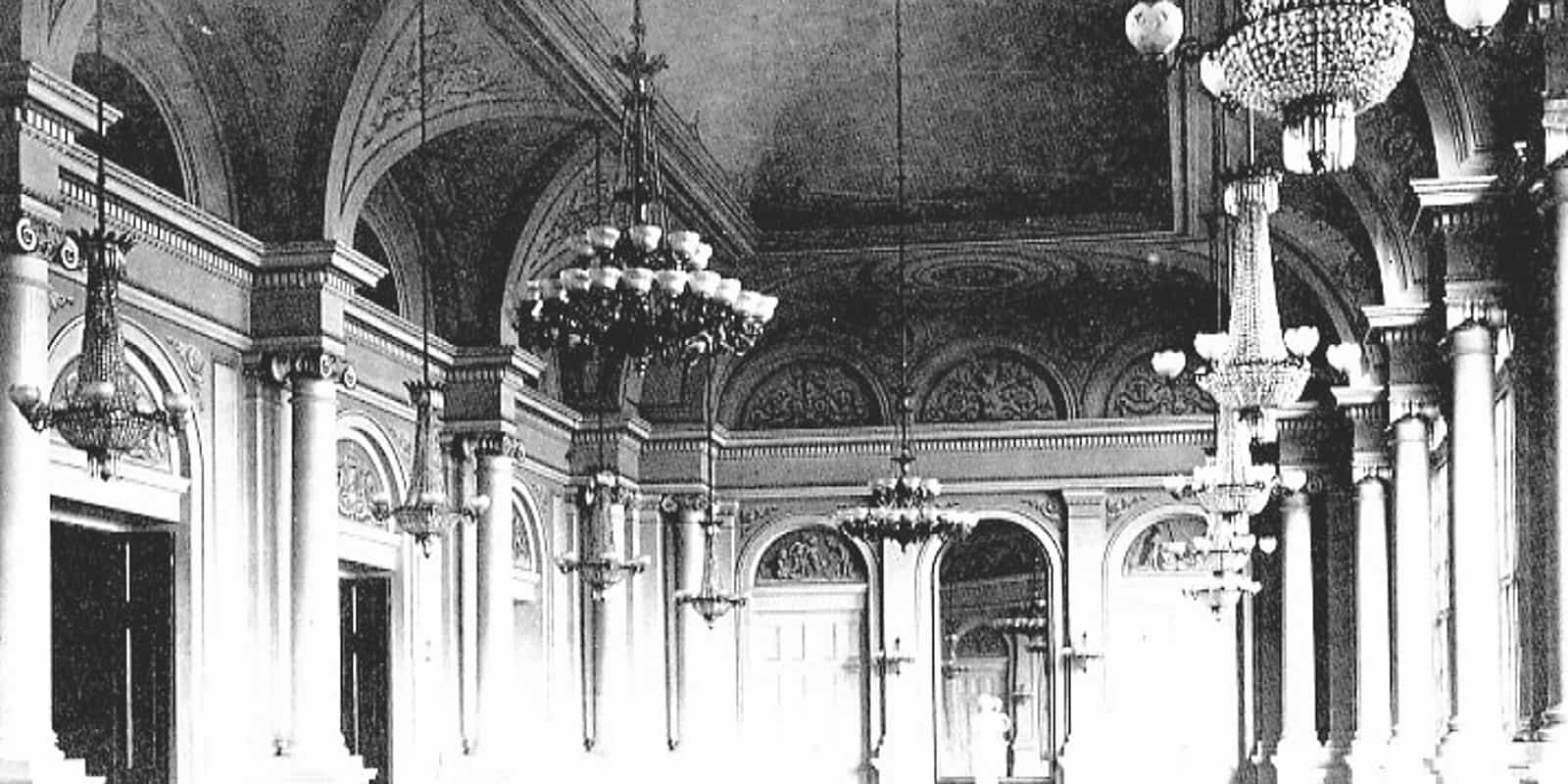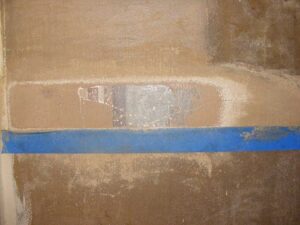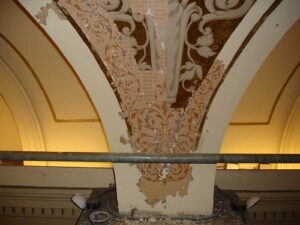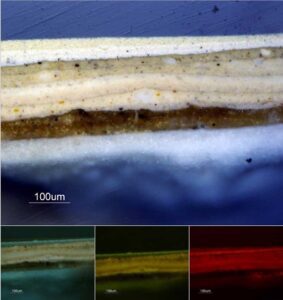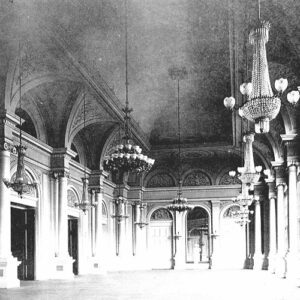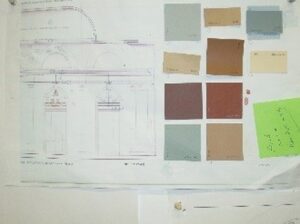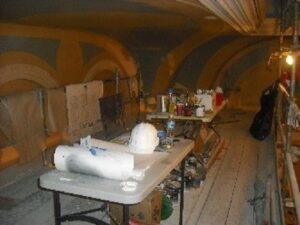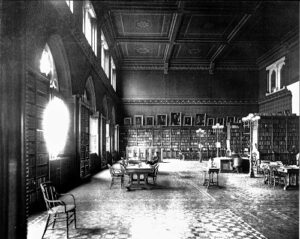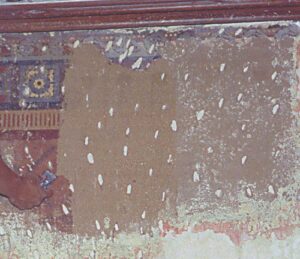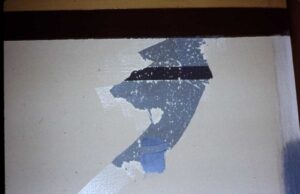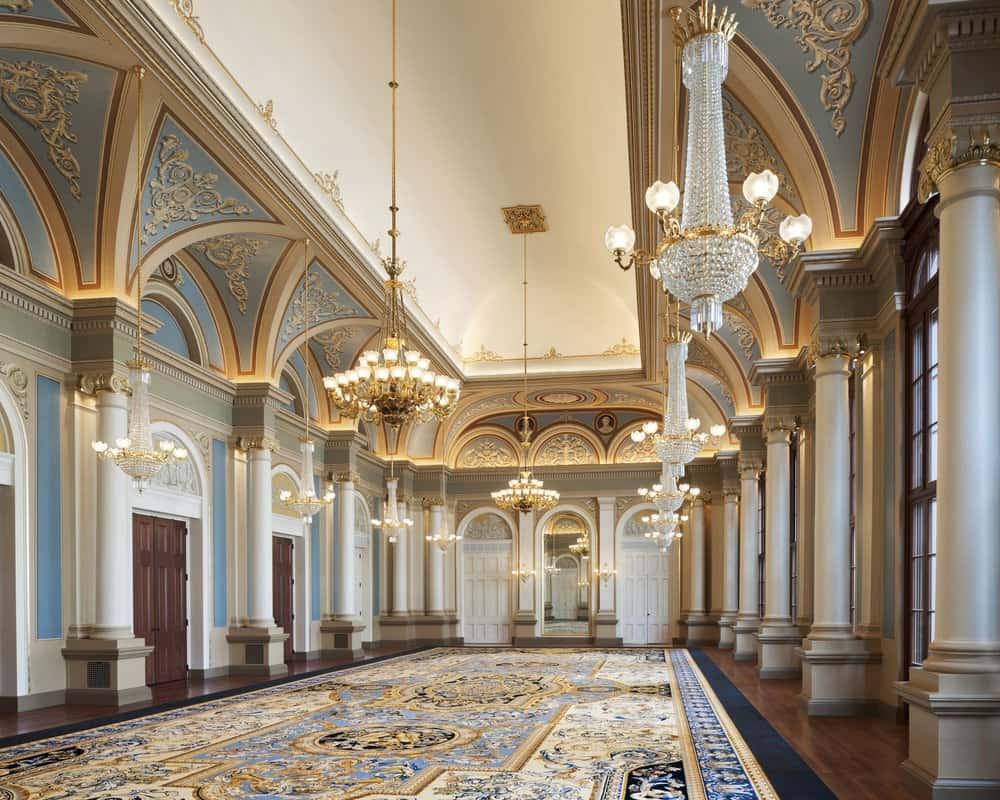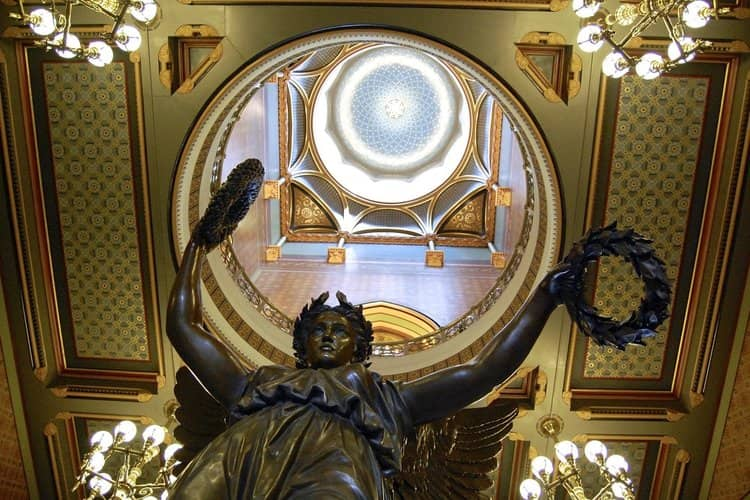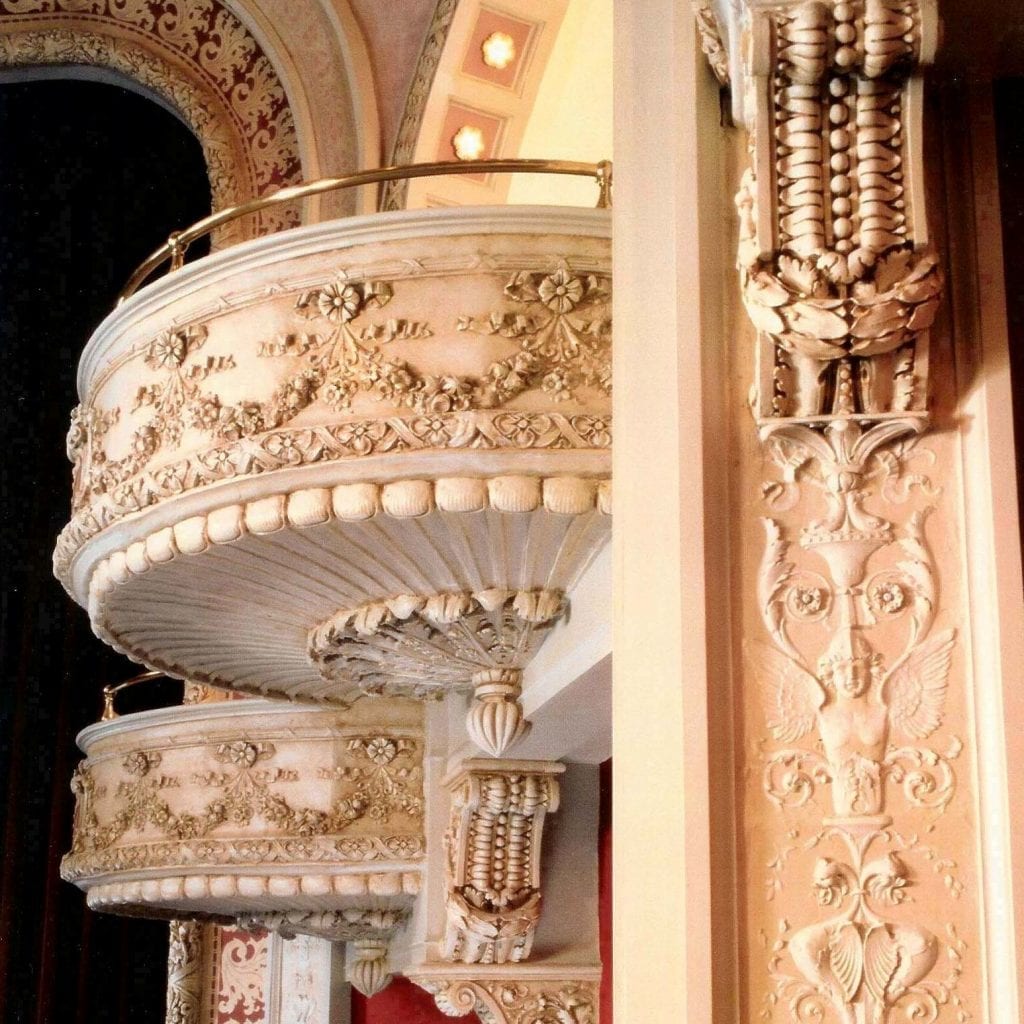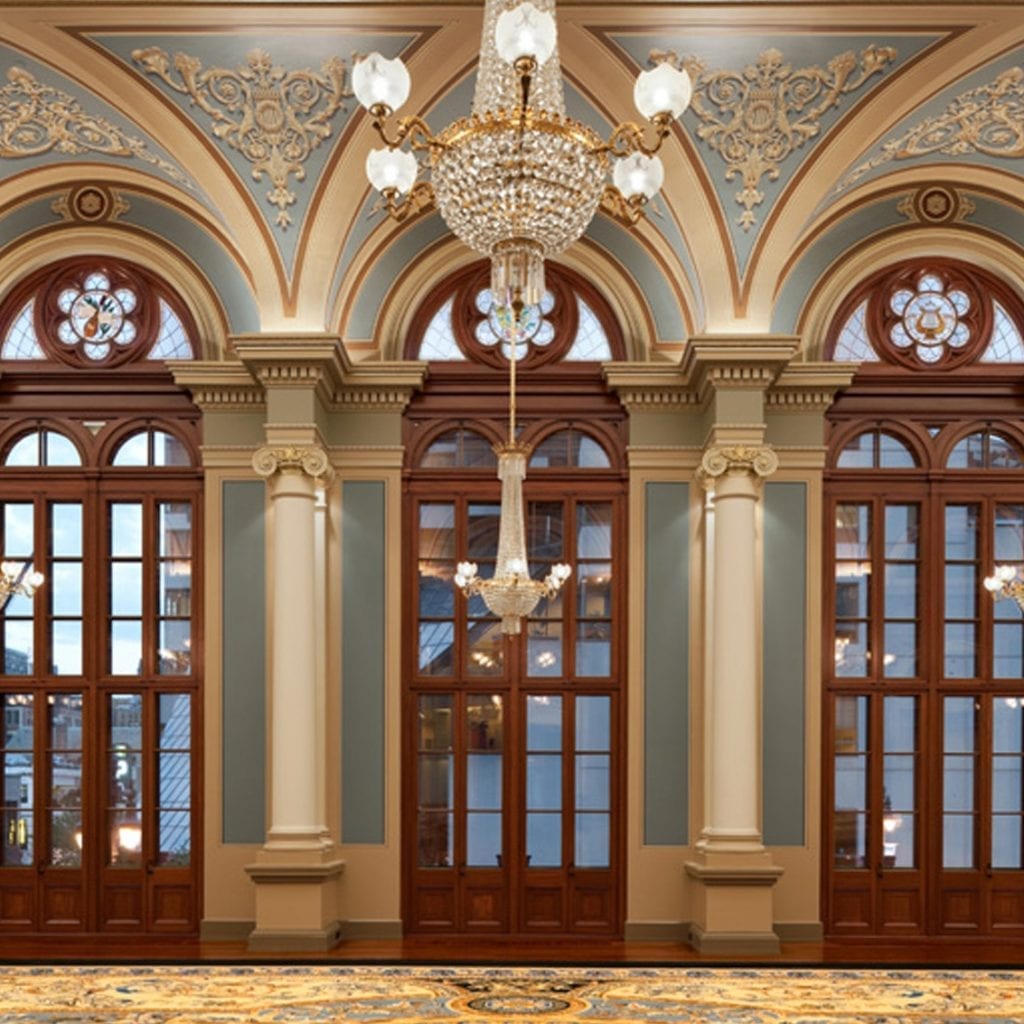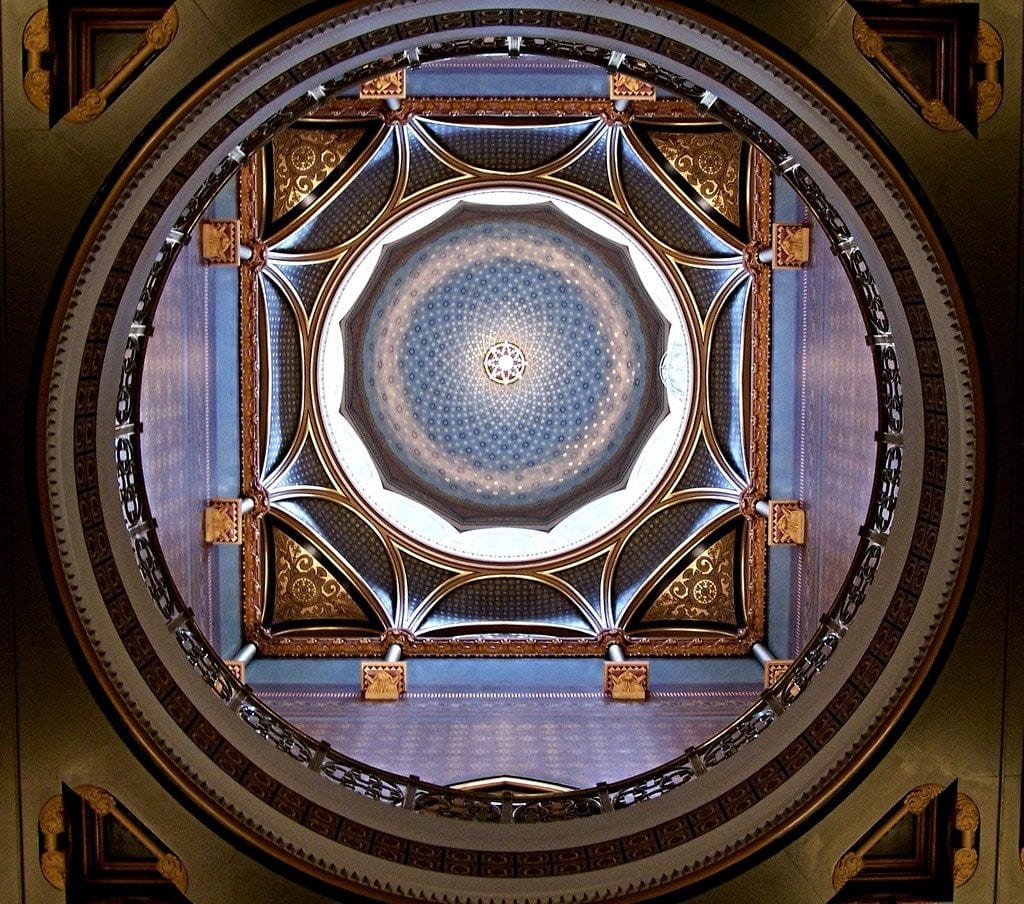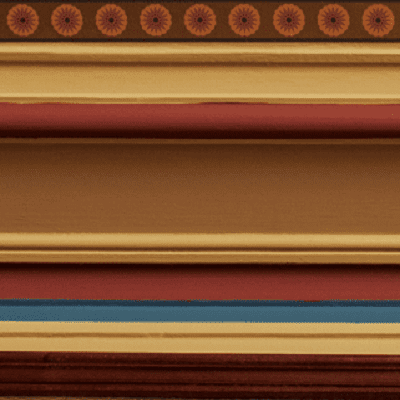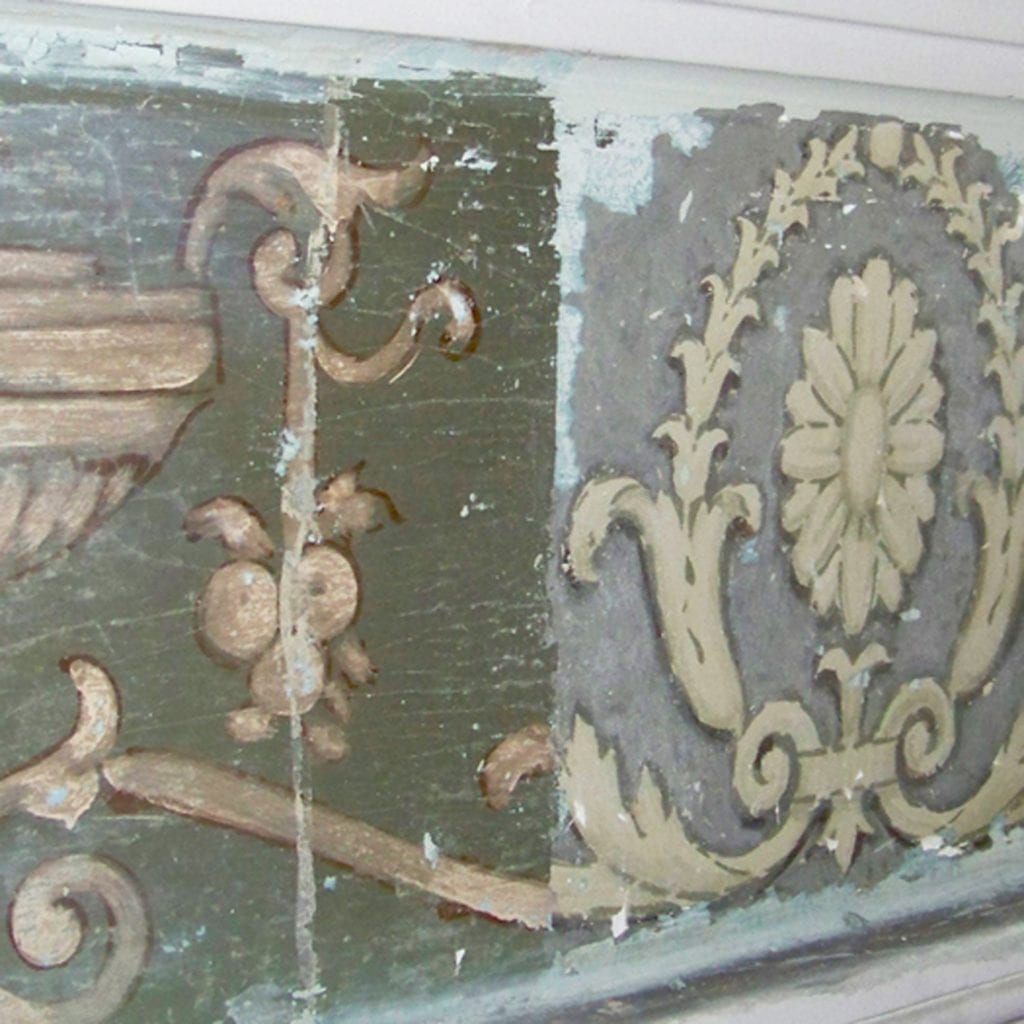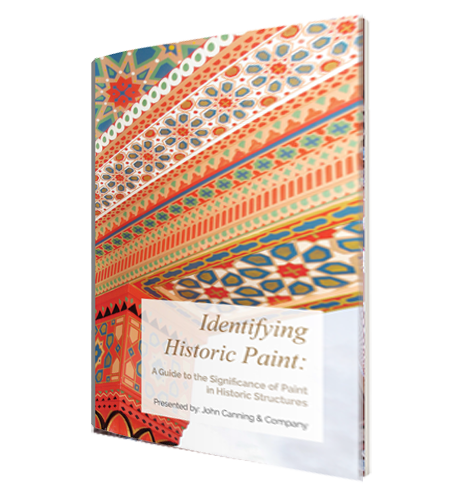When working on historic projects, you are bound to encounter the question: How do I recreate the historic colors that were originally used in order to maintain the historic fabric of the structure? It’s an important question to ask and answer, especially in cases where restoration and conservation are concerned. In order to recreate historic colors, we need to understand the fundamentals of traditional paints.
Incorporating Data from a Historic Paint Analysis
A historic paint analysis is a four-pronged process consisting of archival research, the collection of physical paint samples, laboratory analysis of those samples, and the compilation of a final report and interpretation. Through this process, we can gather the information necessary to recreate historic paint colors. While each component of the investigation and final report offer important insight used to restore a historic interior, some of the more important components (as they relate to recreating historic colors) include:
-
- Stratigraphic Data: The stratigraphic analysis of the complex layers of paint and decorative finishes in a historic structure allows us to understand the history of a structure. By understanding the history, we can go about recreating the campaign of significance.
- Microscopy: Microscopy of the sample cross sections is used to show the pigments and layer structures. This examination reveals the original paint colors, type of paint, and, at times, the techniques that were used in applying the decorative finishes. (However, typically technique and appearance are examined through paint exposures.) Evaluating the stratigraphies in cross-sections is needed for color comparison under magnification and allows for the examination of the buildup of paint layers through the years and allows for a closer look to identify the pigments, binders and fillers.
- Findings Report: The findings report that is provided after completion of the paint analysis will include the identified significant campaign and color matching to both commercial colors (such as Sherwin Williams or Benjamin Moore) and the Munsell Color System, a color system widely used for color matching in preservation. Having all this detailed information is key to the process when it comes to recreating paint colors and the color palette that you are working with.
All projects where we are trying to restore the historic fabric of the structure require multiple steps to recreate the historic colors. Based upon archival and historical data and on-site investigation, we analyze the visible decoration following the guidelines of the American Institute for Conservation (AIC). The analysis allows us to identify which of the visible decorations are original, and to gain an understanding of the materials and conditions of all of the painted surfaces. We conduct exposures, extracted samples from selective decorative locations, perform a microscopy laboratory analysis, and then interpreted the results.
Process of Recreating Historic Colors:
Recreating historic colors requires both a visual eye and a great understanding of colors. This includes understanding the effects of juxtaposition of color, and how they affect each other. Beyond color theory, recreating historic colors and paints also requires a great deal of skill. For best results, period methods and materials must be used to reproduce hand ground paints to fully replicate the historic paint. Traditional materials of this kind require brushmanship and skills beyond that of a typical painter. Depending on the circumstances, environment, and goals of the project, traditional materials may or my not be appropriate, especially when weather and environmental impacts are a factor. Some historic pigments and material can be replaced with substitutes that are more readily available, less expensive, safer to work with and have a greater durability over time but may not provide the precise appearance desired. One of the most important steps in the process of recreating historic colors and reconstructing decorative schemes is the interpretation of the colors and color schemes that were identified during a historic finishes investigation, as well as scientific knowledge and abundant talent to mix and match the colors when needed. An expert also brings the experience and knowledge required to figure out the color selection while taking into account and analyzing how the current layout, modern day lighting, and building use affect the colors. Below, are a couple of example projects that we’ve worked on in the past that included color matching and recreation.
Example 1: Academy of Music, PA
(Top) Left – Exposure; Center – Exposure of Decoration; Right – Stratigraph
(Bottom) Left – Historic Reference Photo; Center – Piecing together the Color Palette; Right – Creating Paints
For the Academy of Music, we examined the visible decoration, conducted exposures to reveal underlying paint layers, and extracted paint samples from the entablature and ceiling of the Ballroom, which we then analyzed. The purpose of these exercises was to attempt to identify original versus subsequent decorative schemes, in order to gain an understanding of the materials used and the conditions of the painted surfaces. Through this analysis, we determined that the existing decorative artwork at the ceiling vault segments was unsophisticated and amateurish in its execution, and far below the quality of grisaille and trompe l’oeil artwork visible in the Ambulatory (which is presumed to be original). Elements of an earlier decorative scheme could be seen ghosting through the early 1900’s decoration. The ghost patterns correspond to original designs that can be seen in the archival photograph presumed to be from the building’s completion in 1857. Some of the investigation revealed the initial design materials. Identified by some of the stratigraphic paint layer samples were water-based materials (emulsions of oil and casein proteins) that were rapid-drying, relatively durable, serviceable, and “matte” in appearance, which undoubtedly lent themselves to the “carved” faux-stone effect intended for the original decoration in the Ballroom. The original Ballroom decoration appeared to be painted over very early on with uniform and monochromatic colors; dark gray, and ochre-colored paints respectively. Both of these re-painting campaigns were executed in essentially oil-bound paints. Using the information found through the paint investigation, we were able to determine the color palette and then recreate historic colors when needed. Being able to interpret this information in a useful way was the key to successfully reinstating the historic fabric of the structure.
Example 2: CT State Capitol
Left – Historic Reference Photo; Center – Exposure of Decoration; Right – Exposure
The CT State Capitol encompasses Aesthetic Movement in style. The interior design was originally designed and executed by William McPherson, with a color palette of tertiary colors used throughout the stenciling and decoration. A connoisseurship was needed for this project. Having the knowledge of the structure and palettes of the time was helpful in noticing the out-of-sync colors as well as seeing the harmony the colors have with each other. After a paint investigation and analysis of the surviving finishes, we concluded that all of the painted decoration was executed in oil paints directly on the plaster substrate, with the exception of the gold background at the rondels, which were painted in the Studio and marouflaged to the wall with lead and oil adhesive. Over the years, it had been coated with layers of varnishes that had yellowed and discoloured, obscuring the bright and colorful original patterns underneath. Other areas of decoration had been completely painted over and obliterated. Some decoration and plaster had been destroyed by water damage throughout the years. All of this information, and more, was used to interpret the color palette and then recreate historic colors when needed. Our knowledge and understanding of the original execution methods helped identify the colors and keep their relationship harmonious.
Conclusion
The process of recreating historical colors can be complex, and working with a professional with an understanding of paint chemistry, historic preservation, and necessary knowledge will allow you to achieve successful results in restoring your project to its original colors. Victorian’s had an expression that “decoration has a state of rapport.” An expert craftsman has the eye and knowledge necessary to interpret the decoration and historic colors so that you neither need to add or subtract anything in order to achieve that state of harmony. When thinking about recreating historic colors, having an expert on your team to help achieve that harmony can be invaluable.

